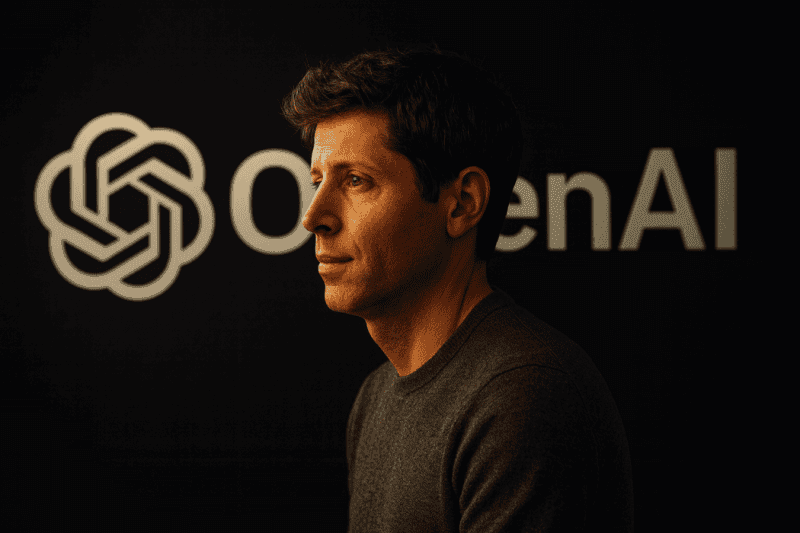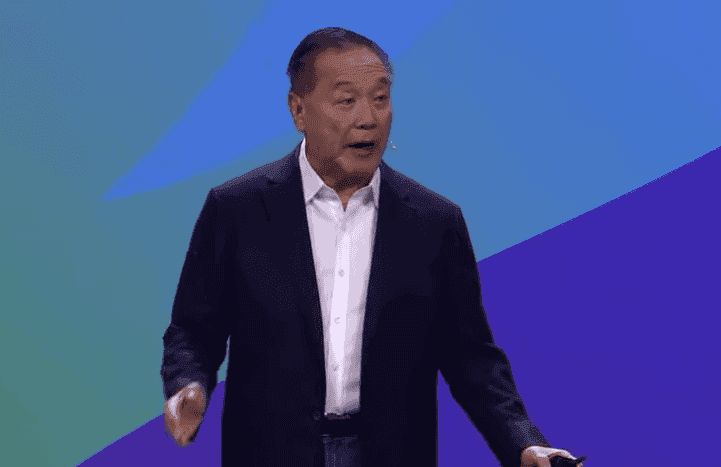OpenAI Urges U.S. Government to Boost Energy Capacity for AI Dominance
4 Sources
4 Sources
[1]
OpenAI calls on U.S. to build 100 gigawatts of additional power-generating capacity per year -- says electricity is a 'strategic asset' in AI race against China
Off the back of its globe-spanning, near-trillion-dollar infrastructure project announcements, OpenAI is now calling on the US government to invest more heavily in power generation, according to CNBC. Describing electricity as a "strategic asset," as much as a public utility, OpenAI believes the US needs to build up to 100 gigawatts of additional power-generating capacity per year in order to power the AI race it's now entered in with China. "There's a need for urgent action to prevent the People's Republic of China from pulling ahead in electricity generation," OpenAI warned in its blog post entitled, "Seizing the AI opportunity." It highlights how China added 429 new gigawatts of power generation in 2024, while America only contributed some 51 gigawatts. This, OpenAI argues, is creating an "electron gap," which puts the leadership of the US in AI development at risk. Indeed, energy prices have been rising in recent months across the US due to AI energy usage, and that problem is only growing larger. To counter this, OpenAI has made a new submission to the White House Office of Science and Technology Policy, urging it to perform several key steps: Ironically, for a missive largely discussing the fact that America has fallen behind its rivals in developing energy infrastructure, the summation of the submission doesn't touch much on how it might change that. There's a lot of talk about how the US could further adopt AI, and a vague idea of "modernizing regulations," to "unlock" energy, rather than building out what's needed to generate it. The more detailed submission document talks a lot about speeding up permit and regulatory systems, "to allow simple AI infrastructure projects to skip the line." It also wants to see AI used in the approvals process for energy infrastructure projects, which it claims could further accelerate the Federal processes involved. It also alludes to leveraging emergency powers and accelerating environmental policy reviews by "considering the national security implications of AI infrastructure construction." Especially when being built on federal land. What OpenAI doesn't discuss at all is how China achieved its incredible power-generating expansion, nor how the U.S. is already going in the wrong direction if it wants to compete. China has seen explosive growth in its solar sector, installing more solar panels in the first half of 2025 alone than the entire US solar capacity. If America wants to catch up and do so fast, it will need to mirror Chinese efforts in solar expansion. The only real attempt the US has made to combat this lopsided investment into solar is to try to slow China down with tariffs, rather than rushing to catch up. Indeed, the Trump administration has made it harder to build solar and other renewable energy projects since its return to power this year.
[2]
OpenAI says U.S. needs more power to stay ahead of China in AI: 'Electrons are the new oil'
Sam Altman, chief executive officer of OpenAI Inc., during a media tour of the Stargate AI data center in Abilene, Texas, US, on Tuesday, Sept. 23, 2025. OpenAI on Monday said the U.S. needs to substantially ramp up its investment in new energy capacity if it wants to stay ahead of China in the race to develop artificial intelligence. The startup has been inking deals for ambitious infrastructure buildouts in recent months that will require massive amounts of power. The sprawling data centers will push the boundaries of what is possible in the U.S. during a time when the electric grid is already under strain. "Electricity is not simply a utility," OpenAI said in a blog post Tuesday. "It's a strategic asset that is critical to building the AI infrastructure that will secure our leadership on the most consequential technology since electricity itself."
[3]
Exclusive: OpenAI's 2026 policy vision
The big picture: OpenAI's big idea is that this isn't just about AI -- it's America's shot at reindustrialization. * In OpenAI's view, the race to secure computing power, modernize the grid and rebuild supply chains should supercharge U.S. manufacturing and energy production. Driving the news: President Trump's AI action plan called for companies to tell the government what regulations stand in the way of AI's development. Comments are due Monday. A new OpenAI internal analysis finds that the first $1 trillion invested in AI infrastructure could add more than 5% to GDP growth over a 3-year period. * The company says the next five years will bring an immense need for electricians, mechanics and other construction trade workers -- an estimated 20% of those existing workforces for OpenAI's purposes alone. What's inside: The Office of Science and Technology Policy should prioritize "closing the 'electron gap' between" the U.S. and China by "setting an ambitious national target of building 100 GW a year of new energy capacity," OpenAI's chief global affairs officer Chris Lehane wrote in the filing. * The company also calls for the government to expand tax credits to AI-related sectors, and use AI to speed up federal permitting and environmental reviews. * When "responsible" AI companies are conducting child safety red-teaming and safety evaluations, the Justice Department should provide them with immunity, Lehane wrote. * The government should encourage more companies to partner with the Center for AI Standards and Innovation, "including by working with Congress to provide participating companies with liability protections such as preemption of state laws and regulations," per the filing. Between the lines: If 2025 was about knocking down momentum toward federal AI regulations, 2026 is about getting the U.S. to help AI companies build the structure needed to carry out their ambitious agendas. What they're saying: Lehane says OpenAI wants to do its part in reaching that energy goal through its Stargate sites. * "In 2026 and beyond, we'll build on that progress by strengthening the broader domestic supply chain -- working with US suppliers and manufacturers to invest in the country's onshore production of critical components for these data centers," Lehane wrote. * "We will also develop additional strategic partnerships and investments in American manufacturing to specifically advance our work in AI robotics and devices." Yes, but: The boom in AI infrastructure could be taking away energy and capital from other efforts to boost U.S. manufacturing. Spending on construction for new factories is down 2.5% this year so far but for data centers, it's up almost 18%, Bloomberg reports. The bottom line: OpenAI is casting AI infrastructure as the new industrial policy.
[4]
OpenAI urges Washington to massively accelerate energy investments to support the rise of AI
On Monday, OpenAI called on the US government to launch an unprecedented effort to strengthen the country's energy capacity, arguing that the future of US technological supremacy over China now depends on its access to electricity. "Electrons are the new oil," the company said in a memo sent to the White House, stressing that energy is a key strategic lever to support the next industrial revolution driven by artificial intelligence. The start-up says its projects, including the Stargate mega data center in Texas developed with Oracle and SoftBank, require colossal amounts of electricity, while the US grid is already showing signs of saturation. OpenAI is calling for a federal commitment to build 100 gigawatts of new capacity each year, pointing out that China added 429 gigawatts in 2024, compared to only 51 gigawatts in the US. This gap, described as an "electron gap," could, in its view, jeopardize the U.S. lead in AI. In a document submitted to the White House Office of Science and Technology Policy, OpenAI calls for a national mobilization around energy production and distribution, comparable to that carried out for semiconductors. The company believes that "energy is now a strategic resource" and that its development will determine the country's competitiveness in the global race for artificial intelligence.
Share
Share
Copy Link
OpenAI calls on the U.S. to significantly increase power generation capacity, describing electricity as a 'strategic asset' in the AI race against China. The company emphasizes the need for urgent action to maintain America's leadership in AI development.
OpenAI's Call for Energy Expansion
OpenAI, the prominent artificial intelligence company, has issued a urgent call to the U.S. government to significantly boost its power-generating capacity. In a bold statement, the company declared that electricity is now a 'strategic asset' in the ongoing AI race against China
1
2
. OpenAI's chief global affairs officer, Chris Lehane, emphasized the need for the United States to build an additional 100 gigawatts of power-generating capacity annually to maintain its competitive edge in AI development3
.
Source: Market Screener
The 'Electron Gap' and China's Lead
The company's concern stems from what it terms an 'electron gap' between the United States and China. In 2024, China added a staggering 429 gigawatts of new power generation, while the U.S. only contributed 51 gigawatts
1
. This disparity in energy infrastructure development could potentially jeopardize America's leadership in AI technology. OpenAI warns that without urgent action, the People's Republic of China might pull ahead in electricity generation, directly impacting the AI race1
4
.
Source: Axios
Policy Recommendations and Economic Impact
In response to this perceived threat, OpenAI has submitted a detailed proposal to the White House Office of Science and Technology Policy. The company's recommendations include:
- Setting a national target of 100 GW of new energy capacity annually
3
- Expanding tax credits to AI-related sectors
3
- Using AI to expedite federal permitting and environmental reviews
3
- Providing immunity for 'responsible' AI companies conducting safety evaluations
3
OpenAI argues that these measures could have a significant economic impact. Their internal analysis suggests that the first $1 trillion invested in AI infrastructure could add more than 5% to GDP growth over a three-year period
3
.Related Stories
Infrastructure and Reindustrialization
OpenAI's vision extends beyond just AI development. The company sees this push for increased energy capacity as an opportunity for American reindustrialization. They predict a surge in demand for electricians, mechanics, and other construction trade workers – estimating a need for about 20% of the existing workforce in these fields for OpenAI's projects alone
3
.The company is already taking steps to realize this vision through its Stargate sites, developed in partnership with Oracle and SoftBank. These mega data centers require enormous amounts of electricity, highlighting the urgent need for grid expansion
4
.Challenges and Criticisms
Despite OpenAI's ambitious proposals, there are concerns about the potential impact on other sectors. Recent data shows that while spending on construction for new factories is down 2.5% this year, investment in data centers has increased by almost 18%
3
. This shift raises questions about whether the AI infrastructure boom might be diverting resources from other crucial areas of U.S. manufacturing.Furthermore, OpenAI's proposals largely focus on regulatory changes and accelerating approval processes, rather than addressing the fundamental issue of how to rapidly build out new energy infrastructure
1
. The company's approach seems to lean heavily on leveraging emergency powers and expediting environmental reviews, which could potentially face opposition from environmental groups and local communities.References
Summarized by
Navi
[1]
Related Stories
Recent Highlights
1
OpenAI releases GPT-5.2 AI model after code red memo targets Google's Gemini 3 threat
Technology

2
Disney invests $1 billion in OpenAI, licenses 200+ characters for Sora AI video generator
Technology

3
OpenAI faces wrongful death lawsuit after ChatGPT allegedly fueled murder-suicide tragedy
Policy and Regulation








